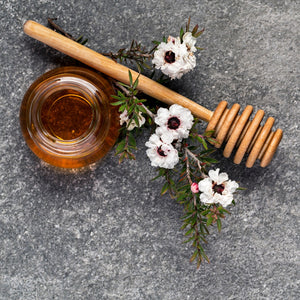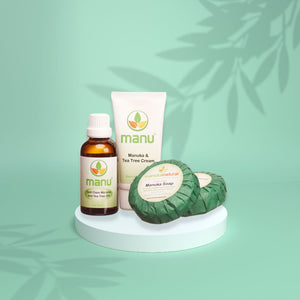Manuka honey labels - what the numbers mean
Manuka honey can be represented with all sorts of numbers on the label which can be very confusing for the buyer.
Unfortunately there are no regulations regarding what is on the label of Manuka honey, it is up to the buyer to determine what they want and what they are prepared to pay for Manuka honey.
For many years Manuka honey has occupied a special place in the medical world because it CAN be the most natural antibacterial honey in the world and can control and eliminate certain bacterial infections that have not responded to conventional antibiotic treatments, in particular MRSA.
This has put Manuka honey with these special qualities on a pedestal and commanded very high prices because of these properties.
Unfortunately not all Manuka honey possesses special antimicrobial properties, only some and only from certain locations within New Zealand.
Not all Manuka honey is created equal!
The most widely accepted Manuka honey certification is called UMF which stands for Unique Manuka Factor to describe and quantify the level of antimicrobial activity which is largely based on the concentration of the compound methylglyoxal in the honey sample.
However there are a number of unscrupulous producers and vendors of Manuka honey who are attempting to pass off honey as this special Manuka honey when it has no additional antimicrobial activity, has very little Manuka nectar content or is blended with other floral honey in an attempt to cash in on the popularity of genuine high antibacterial Manuka UMF honey.
Many of these sellers are adding totally fictitious numbers to their labels like 15+, 16+ 20+ 25+ etc.
Unless these numbers are accompanied with the UMF trademark and the UMFHA licence number they are totally meaningless.
Yet others are putting numbers on their labels which indicate the pollen count of their Manuka honey, this is legitimate as it gives the customer confidence that it is genuine Manuka honey as pollen count or pollen type can be used to determine the floral source of the honey and its purity. However unless this number which may be as high as 75+ in one example I saw is stated clearly as referring to the pollen count, it could also be misleading to the purchaser.
Even if it has a certified pollen count and the pollen source is confirmed as Manuka pollen, it still does not indicate that this honey has any additional antibacterial properties.
Another confusing factor with using pollen count is that it is very difficult to differentiate Manuka pollen with Kanuka pollen from a close relative of Manuka which frequently grows in the same locations.
Then there is the MGO terminology which refers to the methylglyoxal content of Manuka honey in terms of mg/kg where we see label numbers like 400+, 500+, 600+ etc.
It is true that there is a relationship between the methylglyoxal content and the UMF rating of antimicrobial efficacy however this relationship is not linear and to compare the UMF rating with the MGO rating we should refer to the graph from the UMFHA showing that a MGO rating of 400 is approximately UMF 12+ not as has been suggested on some websites as comparable to UMF 20+
In this chart you will see that the term UMF is expressed as NPA, which means Non Peroxide Activity, this is the measure of the additional antibacterial activity over and above any natural antibacterial activity that normal honey has due to the presence of the enzyme glucose oxidase which in turn produces hydrogen peroxide when in contact with human or animal serum such as would be present in a wound.
Therefore to be certain that you are purchasing Manuka honey with a dependable certification of its antimicrobial activity it should carry the UMF trademark preceding the number for example UMF 15+, UMF 20+ etc, it should also carry the UMF Honey Association licence number (in our case 1024) and it should have been packed in New Zealand.
If the honey you see on the shelf of your store does not carry all three of these qualifications, it is not genuine Manuka UMF honey and it will not have the activity that you are looking for.
Genuine UMF Manuka honey with a high certification like 20+ is limited in supply and in high demand from hospitals and clinics around the world, consequently it is very expensive compared to other floral honey.
Manuka UMF honey is the only product, pharmaceutical or natural, that is able treat certain resistant species of bacteria and therefore has become indispensible to the medical community.



Leave a comment